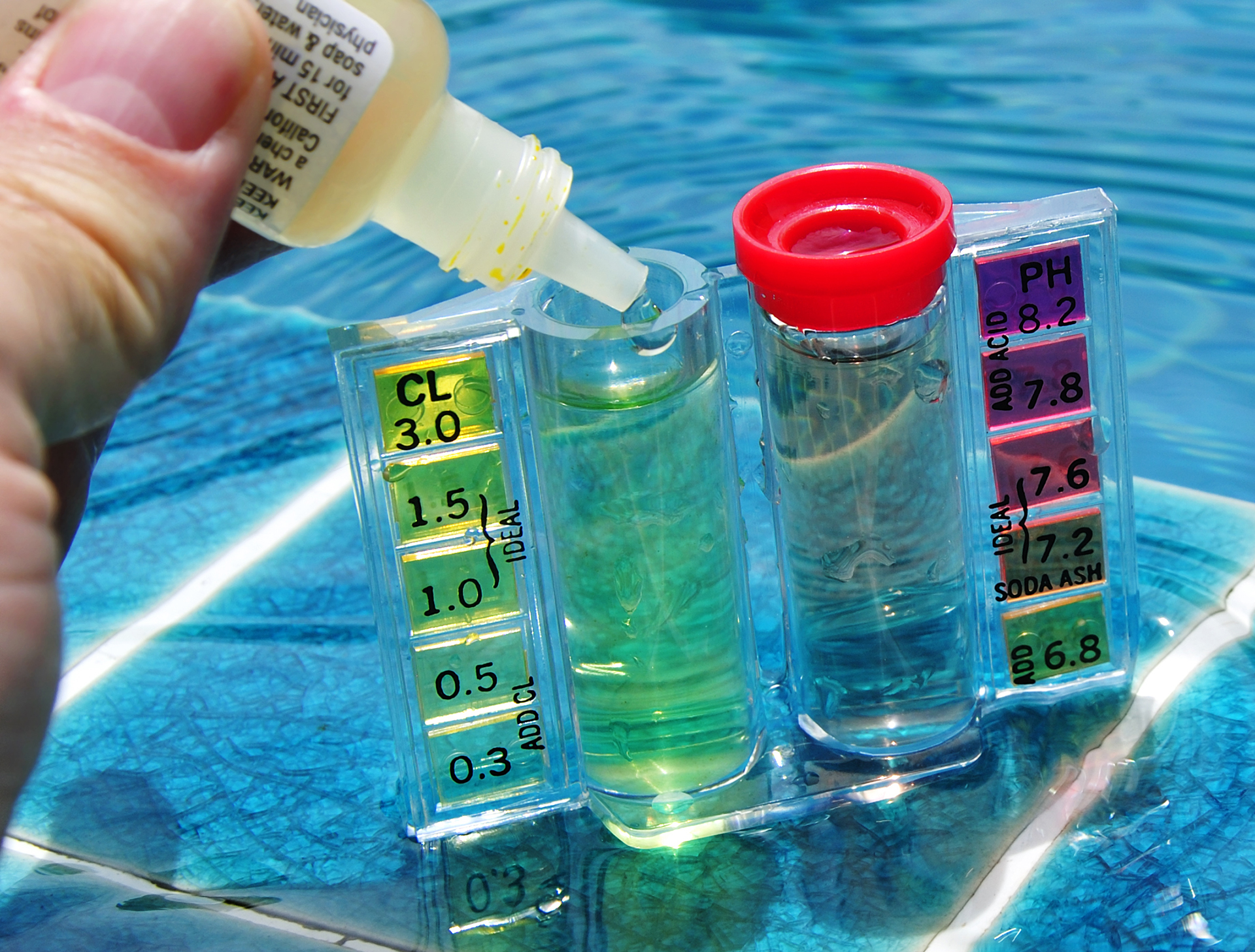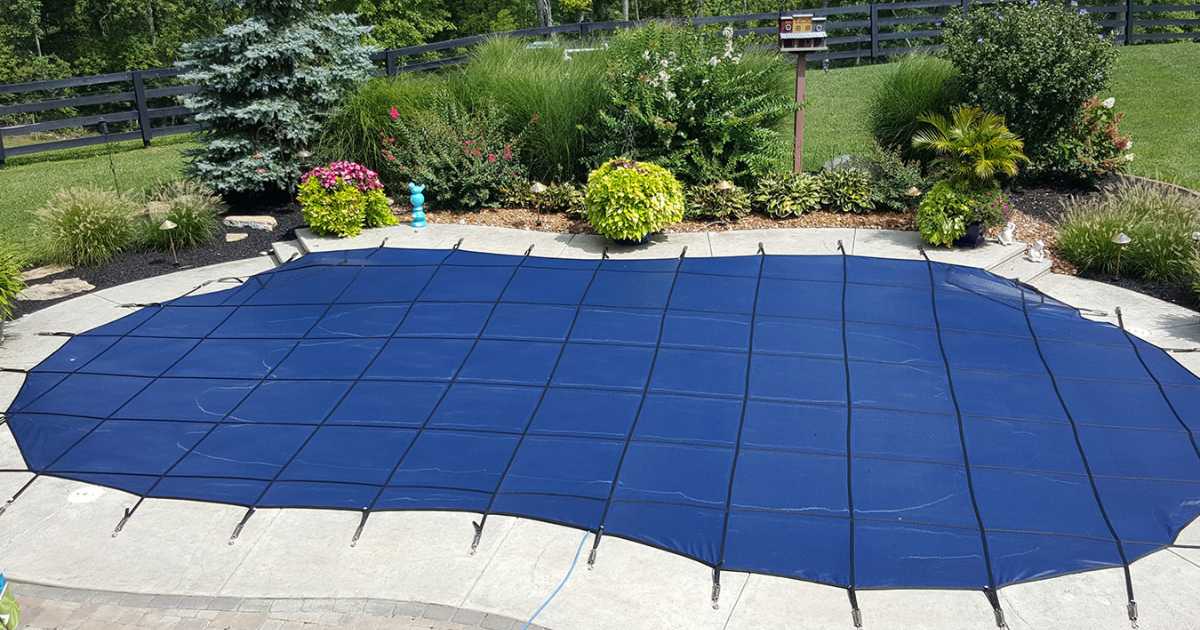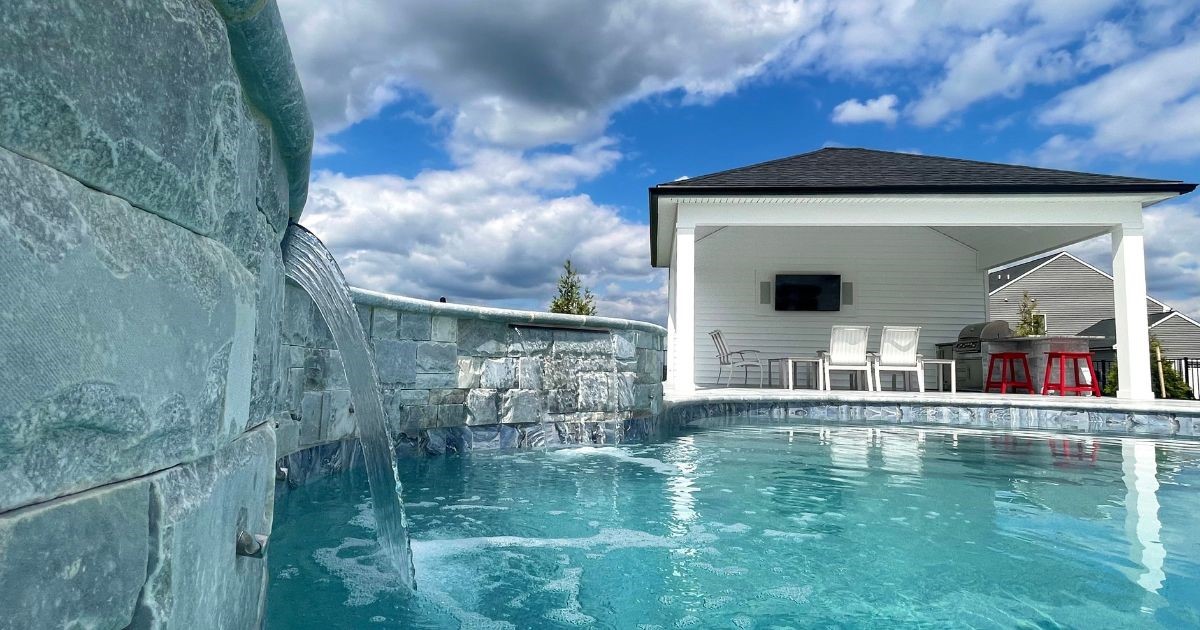The leaves are turning, the temperature is dropping—it's time to prepare your aquatic oasis for…

DIY Pool Water Testing
If you don’t have a pool care company to do it for you, you need to conduct DIY pool water testing at least once a week to ensure a healthy, clear pool. Specifically, you need to know how to test the water to make sure the pH and alkalinity are in sync, and to keep your chlorine level from getting too high or falling too low.
What you may not know, however, is if you don’t do the test right, the pool water testing results are going to be skewed. Here are some pool water testing basics:
Pool Water Testing Methods
There are 3 main DIY pool water testing methods. They include:
- Liquid pool water test kit
- Pool water test strips
- Taking your pool water sample to a pool company for professional testing
Getting a Good Pool Water Sample
The first thing to do, of course, is take a water sample. To get an accurate sample, try to take the sample from the middle of the pool. Make sure you don’t take the water sample near any return jets or the skimmer opening. Ok, now for the actual sampling, here’s what to do:
- Get a clean cup or bottle and turn it over so that the opening is facing the pool floor.
- Insert the cup or bottle into the water elbow-deep and turn it right side up, letting it fill with water.
- If you are taking the sample to a pool company to be tested, cap the bottle before transport.
- If you’re doing the testing yourself, keep reading.
Using Pool Water Test Strips
For DYI pool water testing, using test strips is probably the most common method of testing. It’s quick, easy and amazingly accurate. You will want to use these test strips at least once a week, and during the height of pool season, every other day. To use:
- Dip one test strip into the water sample. Make sure it’s dry before beginning.
- Hold it in the air to air dry for about 15 seconds.
- The strip will change color.
- Match the color on the test strip to the chart on the packaging.
- Adjust pool chemicals and chlorine accordingly.
Liquid Pool Water Test Kit
The other main method of at-home pool water testing is the liquid test kit. It’s a little more involved, but if you test just for chlorine and pH levels, it’s pretty simple. You may want to divide your water sample in two clean cups for this.
pH Testing with Phenol Red
Following the directions, add the suggested amount of Phenol red to the sample. Phenol red is a chemical that indicates pH level. The redder the water, the higher the pH. The water may also turn yellow if the water is acidic.
Testing Chlorine Levels with DPD
The chlorine test works much the same way. Following the directions, add the suggested amount of DPD to the water sample. The water turns yellow based on the amount of chlorine in the water. The brighter the yellow, the higher the chlorine content.
You’ll want to make a note of the two levels, so you can then adjust the pH and chlorine accordingly. With regular pool water testing, you can keep the chemical levels in your pool at the sweet spot.
Not interested in DIY pool water testing? Consider hiring someone to help with pool cleaning.




